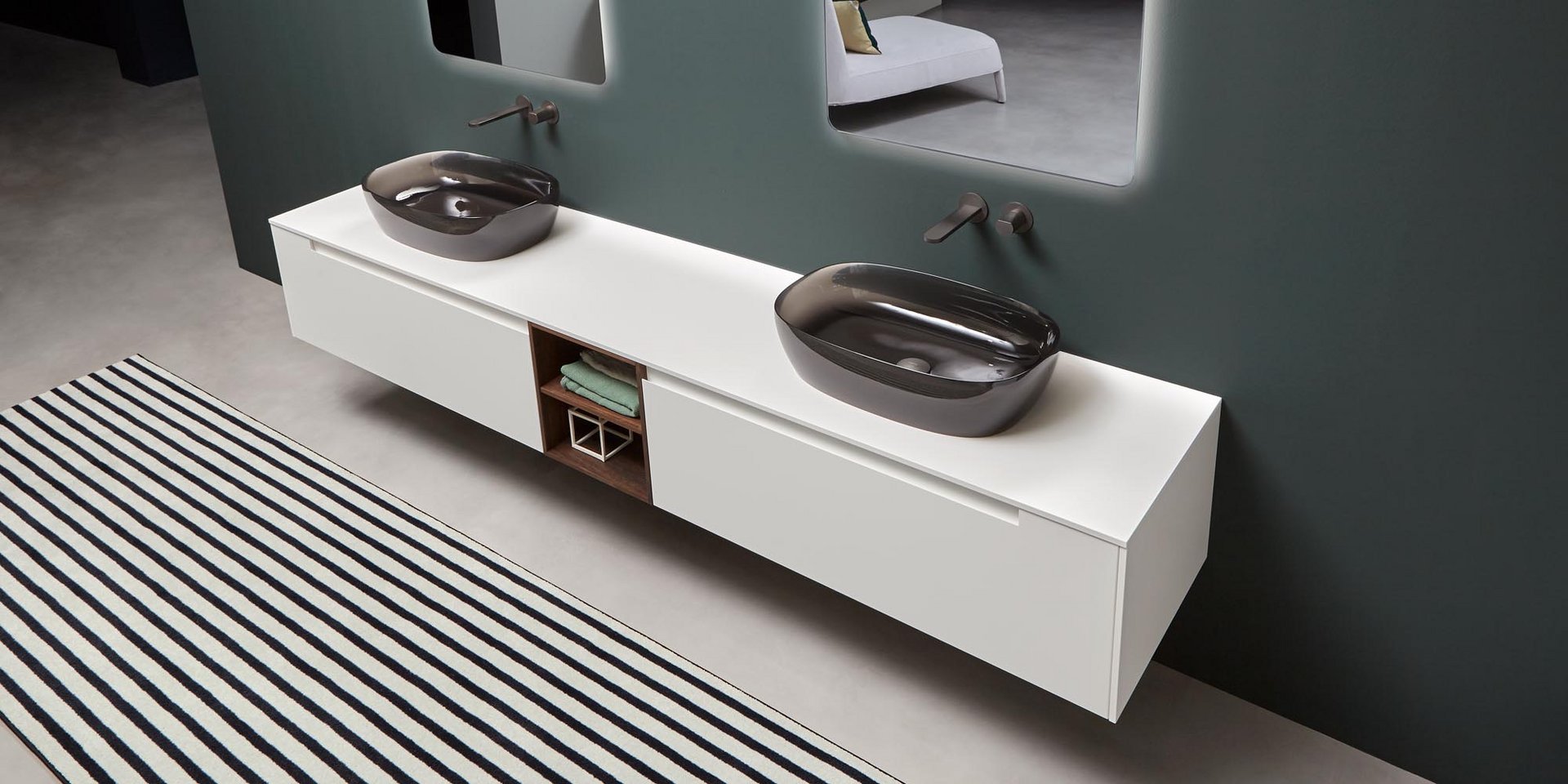ORMA
ORMA
ORMA
DESIGN AL STUDIO
Una collezione pura e senza tempo, un impianto geometrico semplice e una struttura rigorosa ed essenziale impreziosita dalla qualità delle finiture e dei materiali utilizzati, dalla ricercatezza della gamma cromatica, dal tratto identitario della maniglia integrata nell’anta. Orma è una collezione concreta, una serie di mobili realizzati partendo da un “nucleo” in supporto laminato, e da una “pelle” esterna in legno, laccata o con possibili rivestimenti con altri materiali. Una tecnica costruttiva che lascia spazio a numerose possibilità di personalizzazione e a combinazioni possibili di materia e texture sia per le ante che per le strutture, ma anche di vani a giorno, cassetti e contenitori.
La gola è il tratto saliente della collezione, l’impronta, l’orma appunto. Un segno distintivo, che si rivela univocamente nelle basi collocate alle estremità della composizione per le quali la maniglia è fresata fino a un terzo dell’anta, mentre quella delle sulle basi centrali è fresata per tutta la larghezza. Nasce così una gola continua che si sviluppa lungo tutta la larghezza del mobile e che quando viene aperto conferisce all’insieme un tratto caratteristico che esalta anche l’eccellenza tecnica delle lavorazioni e dei dettagli.
ORMA
DESIGN AL STUDIO
A pure and timeless collection, a simple geometric shape with rigorous and essential structure embellished by the quality of the finishes and materials used. A refined color range and identifying trait of the handle integrated into the door. Orma is a concrete collection, a series of furniture made from a “core” in laminated support, and an external “skin” in wood, lacquered or with possible coverings with other materials. A construction technique that leaves room for numerous custom possibilities and combinations of materials and textures for both the doors and the structures, as well as open compartments, drawers and containers.
The handle is the highlight of the collection, precisely the mark. A distinctive sign, which is revealed in the cabinets placed at the end of the composition for which the handle is milled up to a third of the door, while that of the central cabinets are milled over the entire width. The result is a continuous groove that develops along the entire width of the piece of furniture and when opened gives the whole a characteristic feature that enhances the technical excellence of the workmanship and details.































